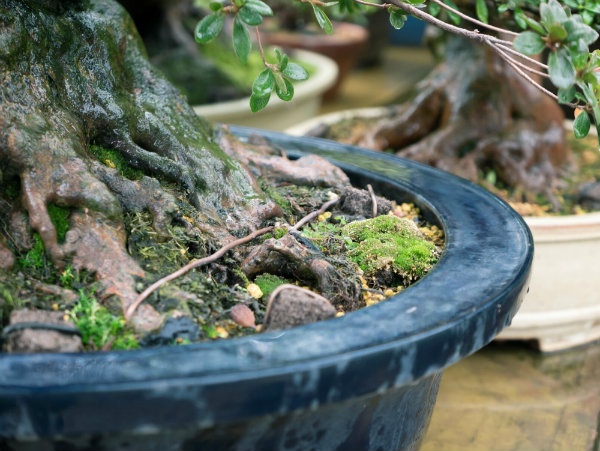Perfecting the Art of Bonsai

The Japanese word "bonsai" is understood all over the world. Bonsai is the art of planting miniature trees and plants in pots to create a simulacrum of natural scenery, to be appreciated for its aesthetic beauty.
By AAJ Editorial Team
Said to have originated during the Tang dynasty in China, the art traveled to Japan about 800 years ago, and became established in its current form through the unique Japanese sensibilities of beauty and aestheticism.
“Bonsai first spread throughout the world in 1970 after attracting attention at the Japan World Exposition in Osaka,” explains bonsai artist Kunio Kobayashi, a master of the highest degree in the bonsai world and winner of four Prime Minister’s Awards for his bonsai exhibitions. “In recent years, the art form has seen distinguished growth and excitement, and these days it feels like foreign media visit me every day. I myself have been flying all over the world, giving lectures and demonstrations in Europe, America, China and Taiwan.”
https://www.youtube.com/watch?v=LnMuuWp6QlQ
Hoping to “communicate the splendor of bonsai to the world,” Kobayashi opened the Shunkaen Bonsai Museum in Tokyo’s Edogawa ward in 2002. Built in a traditional Japanese architectural style, a noble and refined silence—which feels unbelievable here in Tokyo—floats in the air of this house and its garden, where several works of art are exhibited with dignified grandeur.
Kobayashi was working in gardening when he visited a bonsai exhibition at age 28. Upon viewing a certain work of art, he received a shock. “I could feel the enormous life energy emanating from this bonsai, which had been alive for several hundred years,” he says. “In contrast with gardening, which is about appreciating the beauty of plants such as flowers and leaves, I realized that bonsai was about appreciating life.”

From then on, Kobayashi dedicated his life to bonsai. “I failed several more times than others might, and allowed many expensive trees to wither and die,” he recalls. He listened to what his elder craftspeople had to say, voraciously read technical books, and honed his skills through self-education. “Within the aesthetic sensibility of Japanese people, profundity can be felt in concentration. The same is true of haiku and tanka poetry: Using short phrases, you conjure scenes that cannot be seen with the eye. Bonsai is an opportunity to show how grand a world can be envisioned within a small planting pot.”
Kobayashi has taught over 40 people from overseas to date. Peter Warren, who trained under Kobayashi for seven years starting in 2002, opened his own studio in London after returning home, and further authored the book Bonsai, which conveys the knowledge he learned in Japan. In addition to his native England, Warren has opened classrooms throughout Europe and North America, including Italy, Spain and the U.S., and periodically visits Kobayashi to further his education.

“The image of bonsai overseas differs completely from that in Japan,” Kobayashi explains. “In Japan, it is thought of as a hobby enjoyed by the elderly or the wealthy. But overseas it is considered a fine art, and is spreading in popularity, primarily among highly sensory-engaged and perceptive youth. What’s more, foreign enthusiasts, who have until now pursued only the formalities of bonsai, now want to learn the spirit of bonsai, including methods of decorating the toko-no-ma (an alcove in a traditional Japanese home). Even among Japanese people, there are very few who have achieved this level. In European guidebooks, the Shunkaen Bonsai Museum is listed as a must-see tourist destination in Tokyo, and we see many foreign visitors who arrive with their guidebooks in hand. Bonsai has spread much farther and deeper than Japanese people ever imagined.”
In April of 2017, the quadrennial World Bonsai Convention will be hosted by Japan for the first time in the 28 years since its inaugural event. With Kobayashi’s goal being “to make bonsai culture a world heritage,” it would seem that the path to that goal is not very far off at all.



